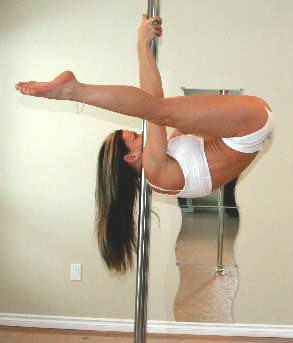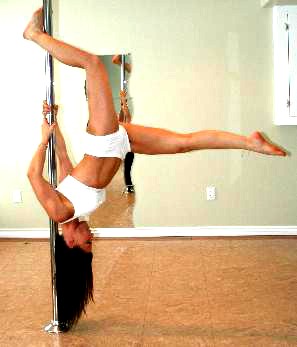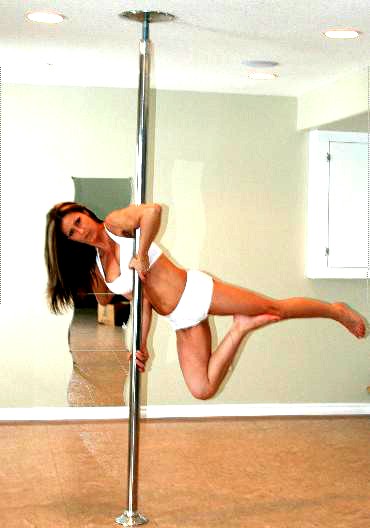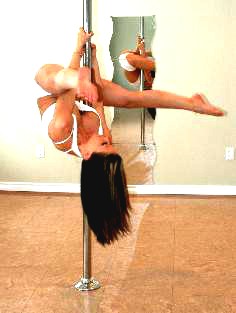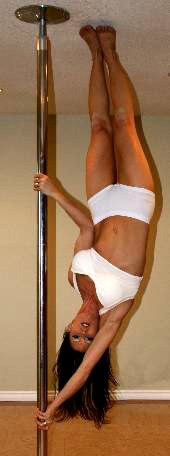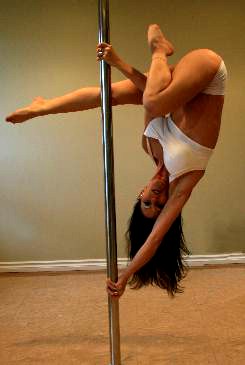OK, get those thoughts of naked women and sleazy bars out of your mind
and start thinking some extremely hard and healthy exercise routines.
Pole dancing is a form of dancing/gymnastics that takes muscular
endurance and coordination as well as sensuality. It involves
dancing sensually with a vertical pole and is often used in strip
clubs and gentlemen's clubs, although more recently artistic pole
dancing (Chinese poles) is used in cabaret/circus and stage
performance in a non-erotic environment. The dancer(s) may simply
hold the pole, or use it to perform more athletic moves such as
climbs, spins, and body inversions.
Recently, pole dancing has caught on as a new and increasingly
popular form of exercise, in which women (and sometimes men)
use the pole as a workout prop. This form of exercise increases
upper body strength (by using the body itself as resistance)
while toning the body as a whole.
With pole dancing becoming more accepted as a from of legitimate
excercise, pole dancing studios are beginning to pop up all over
the world. Resources such as The Pole Dance Directory can help
one find a studio from those across the globe.
The standard dance pole typically consists of a hollow steel or
brass pole running from floor to ceiling. In the United States,
the diameter is usually around 2 inches, allowing it to be
gripped comfortably with one hand. In Asia, the diameter is
usually slightly smaller at 45 mm or less.
Home versions are available which may be used for practice or
aerobic exercise. Materials include polished stainless steel,
chromed steel, and brass. Each material allows for different
gripping ability. Polished steel is one of the slickest materials,
which provides for a faster, more fluid dance; brass poles provide
more friction, allowing for an easier hold with hands or thighs
and creating a slow, sensual dance style. Titanium poles are also
now available, which provide more friction than even brass poles,
allowing more sustained moves on the pole, including advanced
"pole tricks", such as the "Princes Mount Inverted V", shown at the
top of this page, and these:
|
Credits: The woman shown in the pictures and video is not identified,
but is a part of the staff of "Pole Junkies", a training company in
Edmondton, Alberta, Canada. Pole Junkies provides training classes
over the internet, in their studio, or in your home. For more
information, pictures, explanations, etc.,
CLICK HERE.
|

